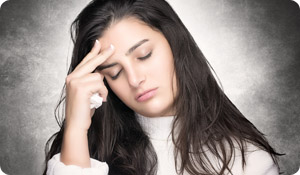
Does winter find you struggling with more than just the weather? If your aches and pains are worse during the colder months, you’re not alone: A 2011 study found that nearly 60 percent of people with back and joint pain reported greater discomfort in the winter. But it doesn’t have to be that way: Read on for tips to manage your cold weather woes.
Cold Weather Woe: Joint and Back Pain
"The influence of weather on rheumatic conditions [which affect the muscles and joints] remains controversial, despite attempts to dissect the direct impact of variables such as humidity, barometric (atmospheric) pressure, and temperature," says Elliot Rosenstein, MD, medical director of the Institute for Rheumatic and Autoimmune Diseases at Overlook Medical Center in Summit, NJ.
Conflicting results in recent studies include a 2004 study of people with rheumatoid arthritis that found humidity aggravated the condition, whereas a 2013 study concluded it was low temperatures and only in middle aged patients. Further complicating things: The effect of weather on rheumatic symptoms could be due to the fact that common indicators, like joint pain, may be caused by entirely different conditions, including Lyme disease, gout, osteoarthritis, rheumatoid arthritis, and fibromyalgia.
However, Rosenstein suspects there’s another factor involved in the aggravation of joint and back pain in winter: a less active lifestyle. "Perhaps the perception that symptoms get worse in winter is really a reflection that we tend to be more sedentary and overindulge around holiday time, resulting in deconditioning and weight gain, both of which have been shown to aggravate the symptoms of many joint disturbances," he says.
The Relief
- Apply heat and/or cold: "We do know, or think we know, that direct application of cold and heat can have beneficial local effects," says Rosenstein. While heat is generally helpful for relaxing muscles and reducing stiffness, applying cold compresses can help lessen inflammatory swelling. And, he adds, "Despite the convention that heat and cold are opposites, sometimes both approaches can be helpful for the same local complaints."
- Stay Active and Eat Healthfully: To fight the pain-promoting effects of a sedentary winter lifestyle, keep exercising and limit the carbs, advises Rosenstein. The American College of Sports Medicine recommends 150 minutes of moderate intensity aerobic activity, and two to three weekly strength training sessions targeting the major muscle groups. For those who are unaccustomed to exercising, start with cardio, adding strength training when you feel more fit and motivated.
Cold Weather Woe: Headache
People who are prone to headaches may find themselves reaching for pain relievers more frequently during the cold weather: "Severe headaches are often caused by changes in temperature, dry weather, storms, or barometric pressure," says Mimi Guarneri, MD, executive director of the Center for Well Being and Integrative Medicine program at Atlantic Health System in Morristown, NJ. She adds that people tend to be in heated environments in winter, and heat frequently triggers dehydration, which can lead to migraines. Sinus infections and colds, which are more common in winter, may also prompt migraines.
The Relief
- Avoid headache triggers: Stay hydrated by drinking plenty of fluids and eating foods with high water content, such as fruits and clear broths. Also wash hands often to protect yourself from catching a cold or virus. If you’re prone to headaches, Guarneri recommends considering an elimination diet, in which you systematically remove common allergens like dairy, gluten, soy, corn, eggs, sugar, tree nuts, and citrus from your diet, and see if cutting out any of these ingredients has an effect on your symptoms.
- Add supplements, and complementary treatments: Guarneri also recommends supplements, including butterbur (a shrub), B vitamins, and magnesium, as well as acupuncture and massage to relieve muscle tension.
Reviewed by Elliot Rosenstein, MD, and Mimi Guarneri, MD.
Sources
Elliot Rosenstein, MD, medical director, Institute for Rheumatic and Autoimmune Diseases at Overlook Medical Center in Summit, NJ. Email exchange with author. February 19, 2014.
Mimi Guarneri, MD, executive director of the Center for Well Being and Integrative Medicine program at Atlantic Health System in Morristown, NJ. Email exchange with author. February 19, 2014.
"When the Weather Gets Cold: Winter Health Problems." NIH News in Health, January 2009. Accessed February 12, 2014. http://newsinhealth.nih.gov/2009/January/feature1.htm
"Aches and Pains During Cold and Wet Weather." Arthritis & Osteoporosis Western Australia. Accessed February 12, 2014.
Salek KM, Mamun MA, Parvin N, Ahmed SM, Khan MM, Rijvi AN, Rahman MH, Khasru MR, Akther A, Rahman M, Islam S, Emran A. "Fluctuation of Pain by Weather Change in Musculoskeletal Disorders." Mymensingh Med J (2011) Oct; 20(4): 645-51. Accessed February 14, 2014.
University of South Carolina School of Medicine/University Special Clinics. "Fact or Myth: Weather Affects Arthritic Joint Pain." Accessed February 14, 2014.
Liang X, Ying G, Huang Q, Wang J, Li N, Tan G, Zhang TR, Huang Z, Zhou J. "Characteristics of Primary Stabbing Headache in a Tertiary Neurological Clinic in China." Pain Med (2014) Feb 7. doi: 10.1111/pme.12361. [Epub ahead of print] Accessed February 14, 2014.
Prince PB, Rapoport AM, Sheftell FD, Tepper SJ, Bigal ME. "The Effect of Weather on Headache." Headache (2004) Jun; 44(6): 596-602. Accessed February 15, 2014.





